Polyurethane Foam Moulding
Foam moulding: the inside story…

At its most basic, polyurethane foam moulding consists of processing the most appropriate materials and dispensing them into into moulds, then allowing them to solidify or expand into foam, to produce individual items.
Whether you use foam for cushioning, insulation or the finest detailing, it’s vital to choose the right foam system, with the right density. At Mewett Polyurethane, we can provide a wide range of systems in different densities, from hard and rigid to soft and flexible.
Factors to consider include wear-resistance, conductivity and shore-hardness (degree of resistance to indentation). All of these can affect foam’s suitability for applications. Tear-strength is important when considering integral skin or cushion foam.
Foam can be pigmented or painted, depending on whether colour is integral to the product or is better applied externally. If required, we can give foam products increased UV stability, as well as anti-bacterial/flame-retardant properties.
We can also incorporate armatures (inserts) and other elements into the process.
The following foam systems are available:
- Structural rigid foams
- Insulation foam
- Integral skin (cushion foam)
- RIM (Reaction Injection Mouldings)
- Elastomers
- Castomers
- Micro-cellular
Contact us for more details.

